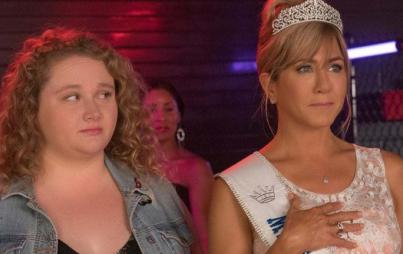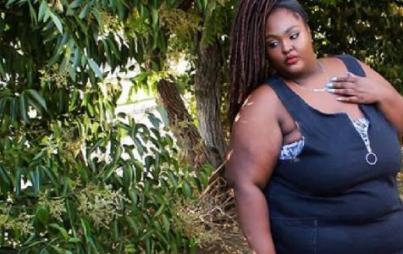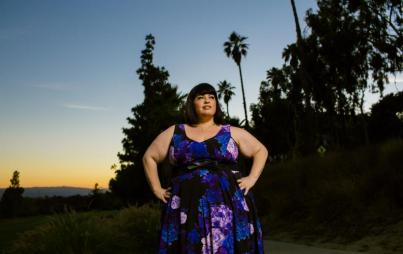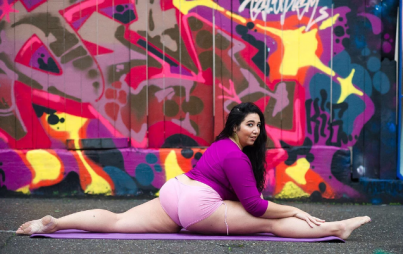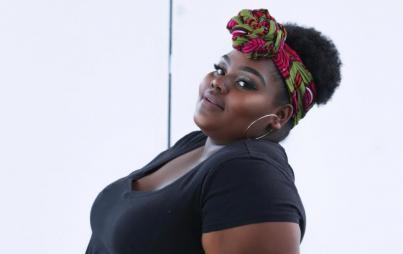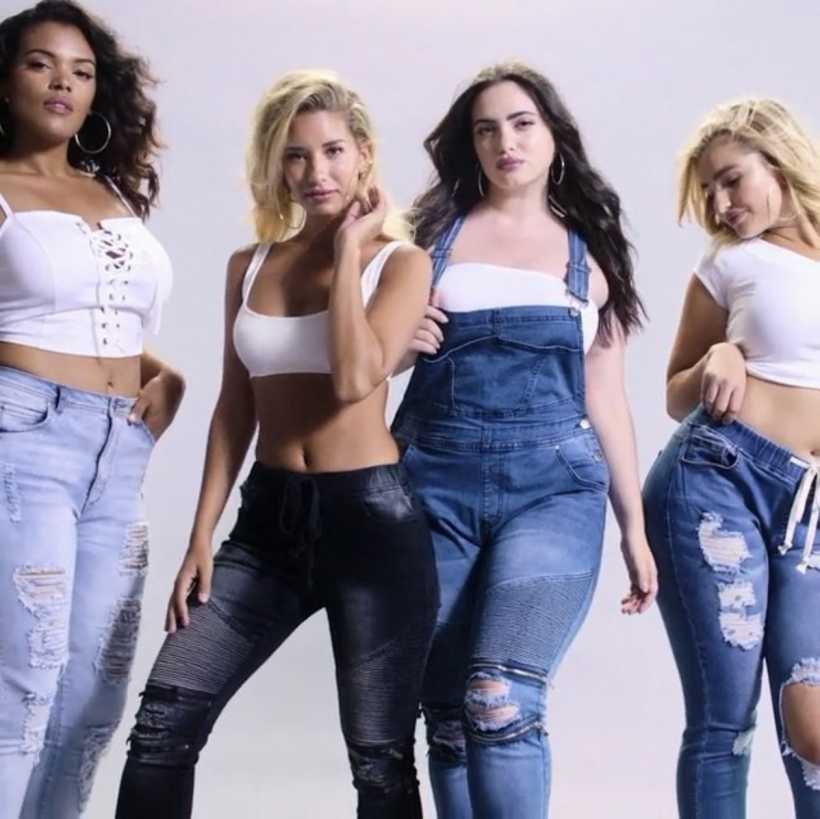
Even if moving to business models that include clothes for people of all sizes might take a while, the issues with models could be solved immediately. (Image Credit: Instagram/forever21)
In a recent press release, Linda Chang, Forever 21’s VP of Merchandising wrote:
“We are pleased to introduce 12x12 Denim as a part of our continued focus on celebrating fashion for all sizes. A key part of our mission is to empower our customers, to be confident with the bodies they have and for their fashion to be an extension of this.”
The 12x12 Denim line comes up to 3XL, but as Refinery29 found, those sizes are less than inclusive — ranging from a 2/4 to just a size 18 (which they are calling a 3x).
The first issue this highlights is the complete mess that is the “some number of X’s and an L” sizing system. I’m a size 26/28 and, typically, I wear a 3XL. But I certainly can’t count on that. As I was (procrastinating) writing this piece, two different dresses from the same manufacturer appeared on my FB feed. The first dress has the sizing that I’m used to — XS (2–4), S (6–8), M (10–12), L (14–16), XL (18), 1X (18W–20W), 2X (22W–24W), 3X (26W–28W).
The second one… not so much — XS (0), S (2), M (4), L (6), XL (8), 1X (10–12), 2X (14), 3X (16), 4X (18), 5X (18W), 6X (20W), 7X (22W). Yup, you read it right: a size 8 is considered extra large and I would need it to come in a XXXXXXXXXL in order to fit into it.
So this new line by Forever 21 goes up to “3X” which they’ve defined as a size 18. Forever 21 may be better than some in terms of carrying larger sizes, and they may want to “celebrate fashion for all sizes,” but let’s be clear that they aren’t even close to creating fashion for all sizes. They aren’t the only ones either, despite lots of “all shapes and sizes” marketing language. Most plus size stores stop at 26/28, and you can maybe get “extended sizes” — or, as I like to call them, sizes — online, which means you’re paying for shipping (and possibly return shipping) to try on clothes with questionable sizing, that may or may not fit you, and are unlikely to be shown on models who look anything like you. (Those in between “standard” and “plus” sizes face their own challenges.)
Related: WTF Is Going On In Plus Size Fashion?
It doesn’t have to be this way, though to hear many people in the industry talk, you’d think otherwise. It can be difficult to be size inclusive for sure, but it’s far from impossible. And too often in discussions of fashion, justification take the place of innovation. I spoke to Mallorie Dunn, creator of Smart Glamour, an “affordable, fashionable, and customizable ethical clothing line for people of all shapes, sizes, heights, ages, identities, and styles” about how she does it:
"The thing about being inclusive is that if you are using words like "all," "everyone," "every body," etc., then you need to mean it. Saying "all bodies" but stopping at a 22/3X isn't "all." Saying "every body," but only showing one euro-centric version of beauty, isn't it. Just not using heavy photoshop but then only making clothes up to an XL — [that] isn't it.
"Companies will cite reason after reason why they can't do true inclusivity — demand, money, etc., and none if it is valid. I'm one human, hand making every item and casting every model.
"True, if you continue to exist within the corporate structure of fast fashion that ties heavily into fatphobia, sells confidence in a never ending circle where no one can reach the "goal," and you care more about the bottom dollar (and how cheap you can make things off the backs of marginalized folks), then no. You can't do it. But no one is going to actually own up to that.
We offer clothing in all sizes and then additionally offer customizations on top of that so truly any human can receive items that fit. Then we put all of those people in our look books, ads, and on our runways. We don't photoshop them or alter their bodies or skin or disabilities or even have them remove glasses. I create and curate fashion, but I'm staunchly outside of the fashion industry. I'm disrupting it on every level."
Even if moving to business models that include clothes for people of all sizes might take a while, the issues with models could be solved immediately.
More importantly, we can keep appreciating companies who are doing something while still pushing them to do much more, especially companies that claim to be making clothes for all shapes and sizes but, in truth, are only making them for some. As Mallorie says: “All people wear clothing — all people should have equal access to it.”


